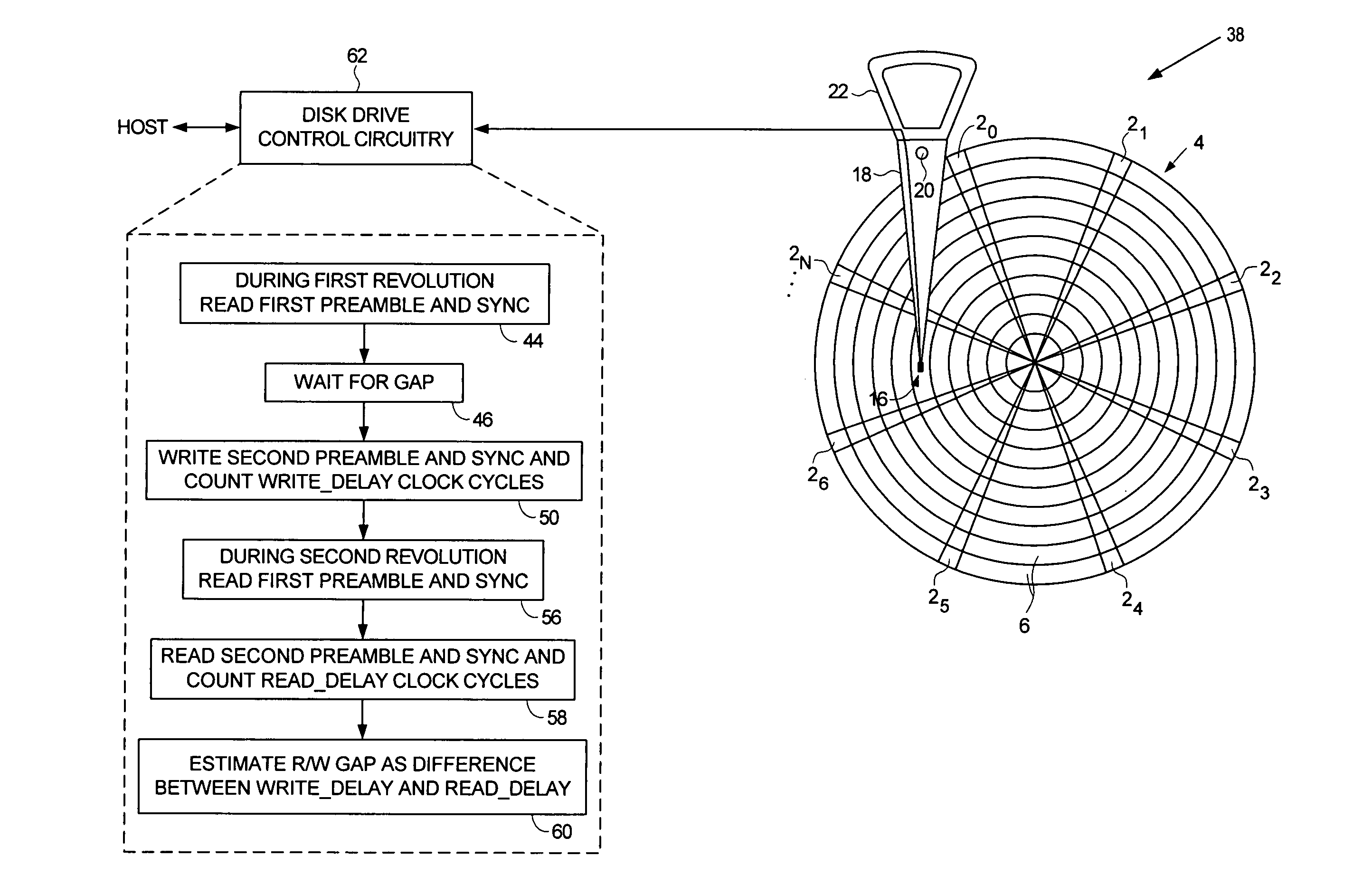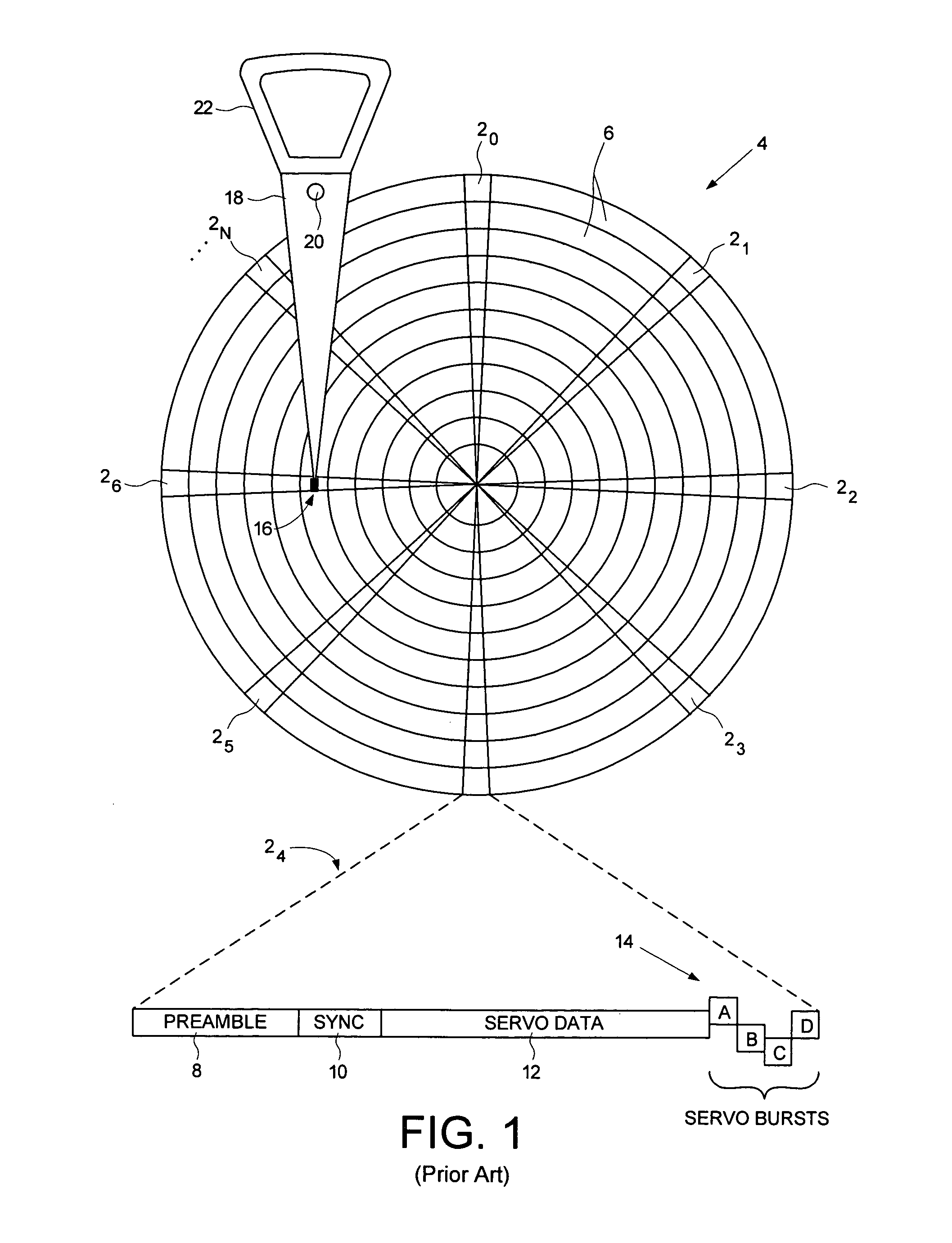Estimating a writer/reader gap in a disk drive by measuring write/read times relative to a sync mark
a technology of write/reader gap and disk drive, which is applied in the field of disk drives, can solve the problems of timing errors, reducing format efficiency, and writing/reading gap
- Summary
- Abstract
- Description
- Claims
- Application Information
AI Technical Summary
Benefits of technology
Problems solved by technology
Method used
Image
Examples
Embodiment Construction
[0029]FIGS. 4A–4C illustrate an embodiment of the present invention for estimating a writer / reader gap 28 in a disk drive 38. The disk drive 38 comprises a disk 4 having a first preamble 40 and a first sync mark 42 (FIG. 4C), and a head 16 actuated over the disk 4, wherein the head 16 comprises a writer 24 separated from a reader 26 by the writer / reader gap 28. Referring to FIG. 4B, a write delay is measured during a first revolution of the disk 4. At step 44, the first preamble 40 is read to synchronize cycling of a clock, and the first sync mark 42 is detected. At step 46, a delay of a predetermined number of the clock cycles creates a gap 48 after the first sync mark 42 (FIG. 4C). At step 50, a second preamble 52 and a second sync mark 54 are written on the disk 4, and a number of the clock cycles are counted relative to when the first sync mark 42 is detected and when the second sync mark 54 is written. During a second revolution of the disk 4 a read delay is measured. At step 5...
PUM
| Property | Measurement | Unit |
|---|---|---|
| magnetic flux | aaaaa | aaaaa |
| length | aaaaa | aaaaa |
| inner diameter | aaaaa | aaaaa |
Abstract
Description
Claims
Application Information
 Login to View More
Login to View More - R&D
- Intellectual Property
- Life Sciences
- Materials
- Tech Scout
- Unparalleled Data Quality
- Higher Quality Content
- 60% Fewer Hallucinations
Browse by: Latest US Patents, China's latest patents, Technical Efficacy Thesaurus, Application Domain, Technology Topic, Popular Technical Reports.
© 2025 PatSnap. All rights reserved.Legal|Privacy policy|Modern Slavery Act Transparency Statement|Sitemap|About US| Contact US: help@patsnap.com



